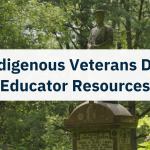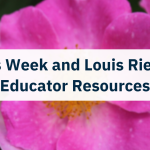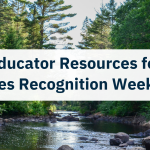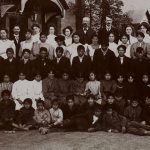Welcoming Your Students
As the new school year approaches, many educators and schools prepare their education spaces to welcome learners. As an educator, I know how much time and dedication we put into setting up bulletin boards and classroom decor to make learners feel welcome. We often use funds from our own pockets to create an atmosphere where learners feel comfortable and ready to learn. We also think about welcoming and engaging our new learners. Icebreaker activities, classroom space arrangements, and even creating a set of class rules as a group are ways we try to get to know our learners.
Welcoming and Safe Classrooms
Finding new ways to make your classroom welcoming and safe is on most educators’ minds right now. To make that process easier, we’ve come up with some great ways to integrate learners’ backgrounds and home life into your classroom atmosphere. Below are some introductory activities for you and your learners to get to know each other. We’ve also thought of ways to integrate parents and guardians into this welcoming process because parental involvement in education is an important part of student engagement in learning.
An important part of teaching is building successful relationships with learners. They feel safe in a classroom where educators get to know and care about them. When you know a learner’s background and family story, you understand better what challenges and supports they have at home. Some of the following activities weave in Indigenous history and knowledge sharing. There is a strong emphasis on family and sharing of stories in First Nations, Métis and Inuit teachings. Modelling this importance in your classroom can help learners of all backgrounds feel better connected to their learning environment.
Our Family Wall
Start the year off by creating a photo wall of learners’ families. Ask learners to bring photographs of their parents, brothers and sisters, aunts and uncles, grandparents or other people they consider family. Each learner should have a small space on a bulletin board to post their pictures. You need not limit the wall to pictures. Encourage learners to post anything that symbolizes their families. For example, if their family likes going to movies on Sunday, learners could put up a ticket stub. If the learner’s family is from a Nation with a Clan system, they could post a picture of their Clan’s animal. Finally, ask learners to write a short piece describing their family and post it with their pictures or other materials.
My Family Story
Family histories are extremely important to many Peoples. In many Indigenous cultures, Elders tell children stories about family members, living and deceased. Family histories are passed down through the teachings and experiences of the Elders. If children know their family history, they will know who they are and where they come from.
Get to know your learners by having a family story-sharing session. Your family history might be a starting point for a lesson on family histories. You can model what you would like to hear from learners by telling your family’s history. That might include the number of people in your family, your cultural background, where you lived growing up, what your parents and grandparents did, and any other stories important to your family history.
Ask learners to find out more about their family history. They can begin by interviewing parents, grandparents, aunts, and uncles. When learners complete their research, they can present their family’s history in a classroom Family History Circle. An alternative is to guide learners to share their family histories in pairs. Then, in a circle, each learner tells the history of their partner’s family. Learners can also illustrate a portion of their family history with a painting or drawing and add it to the Family Wall.
The Story of My Name
Among many Indigenous Peoples, names are powerful and important connections to family. Names are sometimes passed down through families in special naming ceremonies. Some names have been carried for many generations and may have fascinating stories. In some Indigenous cultures, newborn babies are named after a recently deceased relative or community member because it is believed that infants inherit the qualities of the deceased person.
Ask learners to collect information from home about their names. In this way, parents will become involved, and learners will expand their knowledge of their family history. Once this research is complete, invite learners to share the story of their name with the class. Again, your naming story could be the starting point for the lesson. The story behind your name (if there is one) could include who gave you your name and why, who else in your family had that name, and whether the name has significance in your family.
Welcoming and Involving Parents and Guardians
A circle of people around a child is directly involved in their learning and growth. Educators and learning organizations only make a small part of that circle. It is important to acknowledge the roles that many other family members, community members, and Elders play in the lives of children and their development.
An excellent way to make learners feel welcome in your classroom is to make parents feel welcome. Sending home a letter about you, your classroom, and your ideas for parental involvement in learning would be a great place to start. Finding opportunities to involve families in your classroom can also help learners feel safe. It isn’t always an easy task, and it may take time to build strong relationships depending on your school’s community. Below are a few ideas.

- Bring special skills to the classroom. Parents and family members can share these skills through a natural teaching style. Some skills include baking, cooking, gardening, sewing, simple woodworking, drama, dance, music, and sports.
- Make learning materials for classroom use, like cultural items, or decorate classroom spaces with traditional objects.
- Accompany learners on field trips or land-based activities.
- Tell stories to learners, in particular, stories about their family background.
- Hold workshops where family members and staff design and create a cultural place for learners to reinforce and rekindle First Nations, Métis and Inuit traditions.
With these tips and the advice of other educators in your learning community, your classroom will be ready for learning and welcoming come September.
What other techniques do you use to welcome your learners? Please share them with us at achieve@learningbird.com.



